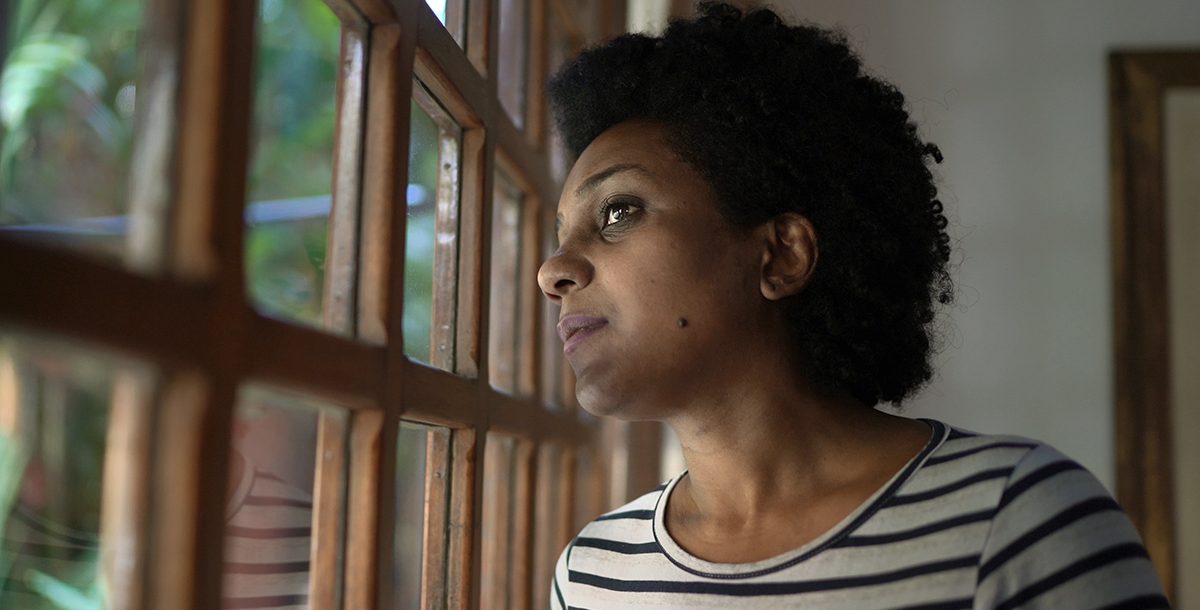May is Mental Health Awareness Month, and it couldn’t come at a better time.

As COVID-19 numbers level off and more people across the country get vaccinated, the impact of the pandemic is starting to take a new shape. People are slowly transitioning to more social activities, families are continuing to grieve lost loved ones and some individuals who survived COVID-19 are learning that the battle isn’t quite over.
Carson Felkel, MD, our system medical director for behavioral health, answers some burning questions about the COVID-19 pandemic’s impact on mental health.
Q: The pandemic has obviously taken a toll on everyone’s mental health. However, there is a condition that’s beginning to emerge more called Post-Acute COVID Syndrome. What is that?
A: You’ve got the general population who has suffered through COVID-19, and then you have vulnerable subgroups that went into COVID-19 with mental health conditions. Loneliness and fear of getting sick have induced and exacerbated mental health and addiction issues. Beyond that, we have a whole new wave of patients who have developed the post-acute brain disease from this viral infection. That’s what we term Post-Acute COVID, and it really does mimic a traumatic brain injury.
It is well documented that viruses like COVID-19 can cause a constellation of symptoms for people after they overcome the viral infection. Those symptoms frequently involve the heart, the lungs, the GI system, the joints, and of course, the brain. What we’re seeing predominantly from Post-Acute COVID are the brain symptoms – headaches, depression, anxiety and fatigue, etc. About one in three patients will develop these neurological symptoms and struggle with mental health.
Most symptoms following COVID-19 resolve around four to six weeks, but there are a number of symptoms that persist, potentially worsen or even begin afterwards. A lot can vary based on whether you had a complicated or very simple, mild COVID-19 course, so it’s hard to predict how complicated your symptoms will be.
Q: How can I tell the difference between pandemic-related stress and anxiety versus Post-Acute COVID Syndrome or something that I would need to seek medical help for?
A: This is a disease that is unique to each individual person. For instance, brain fog is such a general and vague term that gets used a lot. As we talk about brain fog, every person experiences that differently. To some it could be not being able to multi-task at work anymore, and to others it could be not being able to recall their kids’ names quickly. It’s important for people to talk to their health care provider about the specific aspects they’re struggling with. Brain fog is real and very common, but it’s important to talk about what specifically is happening to you to help determine if you need to seek further treatment.
Q: Even with case numbers holding steady and more vaccinations taking place, it could be a while before our lives return to what many feel is “normal.” What steps can a person take on their own to help them cope with that ongoing stress?
A: A common theme throughout this pandemic was the disruption of restorative sleep. A focus on getting good sleep is a must. That would include improving sleep hygiene by doing things like lowering your body temperature, cutting out caffeine and not working out right before bed. If those don’t help, reach out to an expert to help address whatever issues may be preventing you from getting that restorative sleep.
We also now have social media where people can get additional support or even join specific groups where they can talk about their shared symptoms. There’s a level of awareness around this pandemic, as it’s impacted so many, so there’s an added comfort in being able to know you’re not alone.
Q: If someone is feeling nervous about venturing back out into the world as things are slowly opening up, is that normal?
A: Yes. Some may have ongoing worries about the virus itself. For instance, they may find it tricky to resume a normal activity such as exercise if it means going to the gym where many people may not be masked. The same can be said for visiting a store or restaurant, as the safety level, which in turn can shape a person’s comfort level, is often dependent upon the rules set by each establishment.
Many people have also been isolated for months at this point, and a return to socializing and being around people may create some anxiety just as with any situation in which we’re making a change to our normal routine.
Q: If we can learn anything from the mental health struggles people are facing now, what would you want that takeaway to be?
A: Post-Acute COVID is nothing new. After the Spanish flu pandemic in 1918, asylums increased by 7% each year for six years. In 2003 with SARS, 33% of people had a psychiatric condition and around 17% of people were not back to work in a year.
Same thing happened in 2012 with Middle East Respiratory Syndrome (MERS) – if you look back, it happens after every pandemic. The actual bigger conversation isn’t how do we recognize these symptoms, it’s why do we keep forgetting that this happens every pandemic? Everyone is so eager to move beyond this pandemic – and I can understand this – but I fear we are going to again forget for the next 100 years until that next pandemic what the next six months are going to hold.
Learn more about the behavioral health services we offer at Bon Secours.





